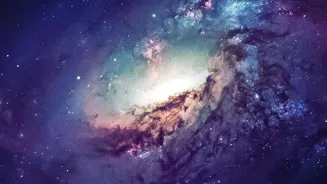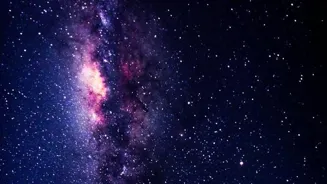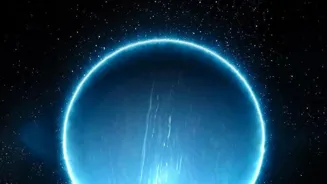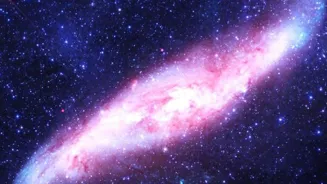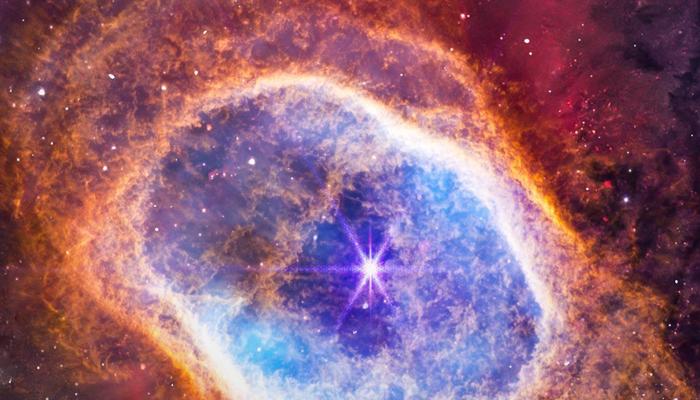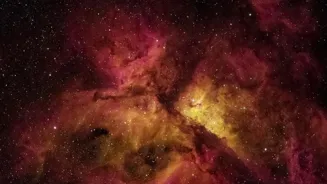Explore 10 stunning space images revealing the wonders of the universe. From nebulae to exoplanets, these visuals redefine our cosmic perspective. Dive into a world of celestial beauty and scientific insight
that will leave you in awe
Breathtaking Images of Space That Will Change How You See the Universe
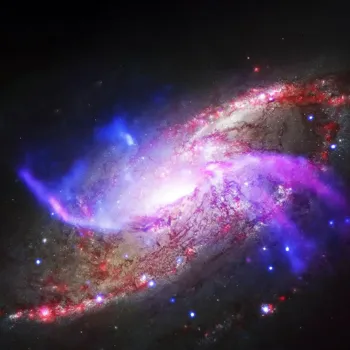
New Delhi
Prepare to have your mind blown, folks! The universe, that vast expanse of stars, galaxies, and nebulae, is full of wonders.
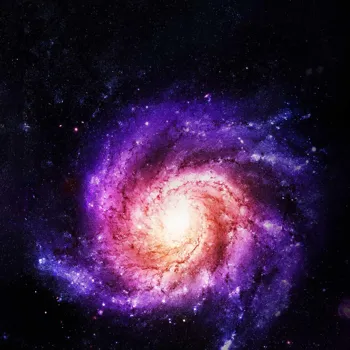
Thanks to powerful telescopes like the James Webb Space Telescope (JWST) and the Hubble Space Telescope, we now have access to images so stunning, that they challenge our understanding of what's "out there".
These pictures are not just pretty; they offer a glimpse into the formation of stars and planets, the life cycle of galaxies, and maybe even the building blocks of life itself. Get ready to embark on a visual journey that will make you feel wonderfully small, yet deeply connected to something huge.
From swirling cosmic clouds to galaxies colliding in spectacular fashion, these eye-popping pictures of space deserve a double take. Let’s dive into the captivating realm of space with 10 images that are sure to redefine your perspective on the universe.
JWST reveals "Pillars of Creation" in Eagle Nebula, showing newborn stars in Milky Way
First up is the "Pillars of Creation," a region in the Eagle Nebula. The JWST has given us a fresh view of these towering columns of gas and dust. The new image shows the nebula more clearly than before. The image reveals newborn stars. These new stars were not seen in previous images.
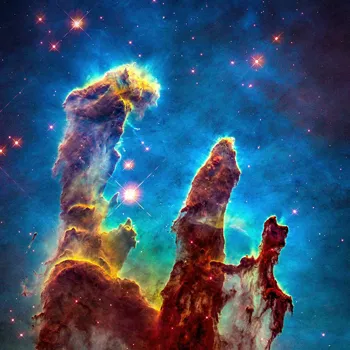
The Pillars of Creation are in our very own Milky Way. This is about 6,500 light-years from Earth. These pillars are made of cool interstellar gas and dust. They appear semi-transparent in near-infrared light. The powerful winds of the bright and young stars are slowly eroding the pillars.
By the end of this process, the gas and dust will be scattered into outer space. The Pillars of Creation image shows the universe is a place of constant change. Stars are born and die, creating new elements that help give rise to planets.
Breathtaking view of Phantom Galaxy, M74, reveals spiral structure and star-forming details
Next, we have the breathtaking view of the "Phantom Galaxy," or M74. This image highlights the galaxy’s spiral structure. It is seen 32 million light-years away in the constellation Pisces. The JWST's mid-infrared vision shows the dust in space. These are filaments around the galaxy.
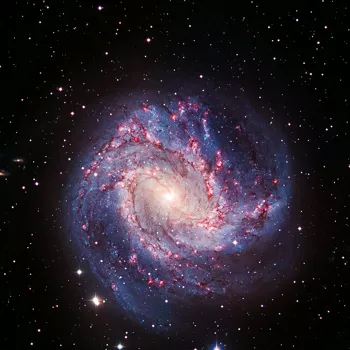
The image shows gas and dust which give the galaxy its ghostly look. The Phantom Galaxy is a perfect spiral galaxy. It is almost face-on to Earth. With two clear spiral arms, it stands as a prime example of its kind. M74 is not hidden by much gas or dust.
This gives astronomers a grand view of star forming. These are events in the disc of the galaxy. This image shows the details of how stars come to life. It gives people a glimpse into the workings of far-off galaxies.
Exploring the Southern Ring Nebula, a cosmic bubble expelled by a dying star
Let us explore a planetary nebula. Observe the Southern Ring Nebula. It is a nebula made of gas and dust thrown out by a dying star. The dying star is at its centre. The star is sending rings of gas and dust into space. This creates a cosmic bubble. The nebula is vast, with an amazing halo of gas.
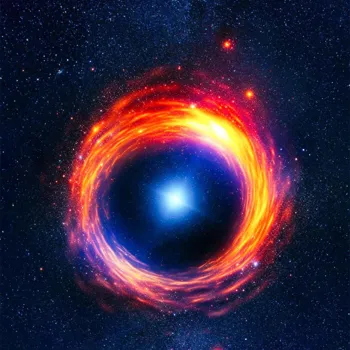
It is expelled by the dying star. These materials have been expelled from this star for thousands of years. These gases are slowly moving away from the star. This phenomenon shows how stars shed their outer layers as they near their end.
The Southern Ring Nebula is a reminder of a star's life cycle. The halo of gas is a thing of beauty. The outer halo is composed of cooler material. It gives viewers a sense of both beauty and sadness.
Constant change in solar system, Jupiter's storms and moons
Our solar system is a place of constant change. From the sun's flares, to the outer planets getting hit by ice and dust. Jupiter gives us more to see. Thanks to images of this planet. These show the swirling storms in Jupiter’s atmosphere.
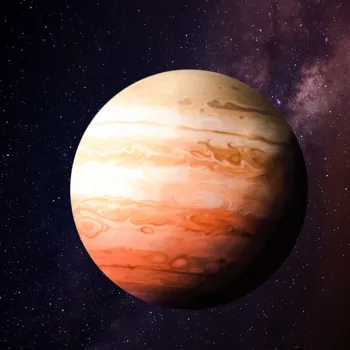
The Great Red Spot, a storm bigger than Earth, is a key feature. The swirls are caused by the winds and atmosphere in the gas giant which are very turbulent. We can also see the delicate rings around the planet. Also the planet's moons, and the way they interact with the rings.
The images help us learn about Jupiter's atmosphere, climate, and inner workings. Jupiter is the largest planet in the solar system. It is a gas giant. So it does not have a fixed land surface. The swirling storms make Jupiter a place to study.
Exploring exoplanets for signs of life with JWST
Moving beyond our solar system, we have to look at exoplanets! These planets orbit stars outside our solar system. The JWST has given us great insights into these distant worlds. It can analyze the atmospheres of these exoplanets. It can find the chemical makeup of the gases.

It is helping scientists figure out if any of these far-off planets could support life. The detailed examination of exoplanet atmospheres is a major change. Methane, carbon dioxide, and water vapour are important chemical indicators. These chemicals may signal the presence of life.
This exploration has the potential to help rewrite our understanding of life's place in the universe. This will guide the search for habitable worlds beyond our solar system.
Galaxy clusters reveal insights into early Universe evolution
Finally, we look at galaxy clusters. The galaxy clusters show us how galaxies are clustered together. The images show that gravity holds these clusters together. The clusters merge to form larger structures over billions of years. The JWST can see the distant galaxies.
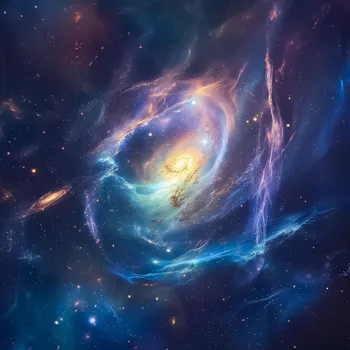
The distant galaxies have light stretched by gravity. These lie behind the massive galaxy clusters. This gives us insights into the early Universe. The light has to travel through space. As light travels, we can learn more about space and time.
This study will help shed light on the evolution of the cosmos. They will improve our knowledge of how the Universe began and evolved.
AI Generated Content. Glance/InMobi shall have no liability for the content

